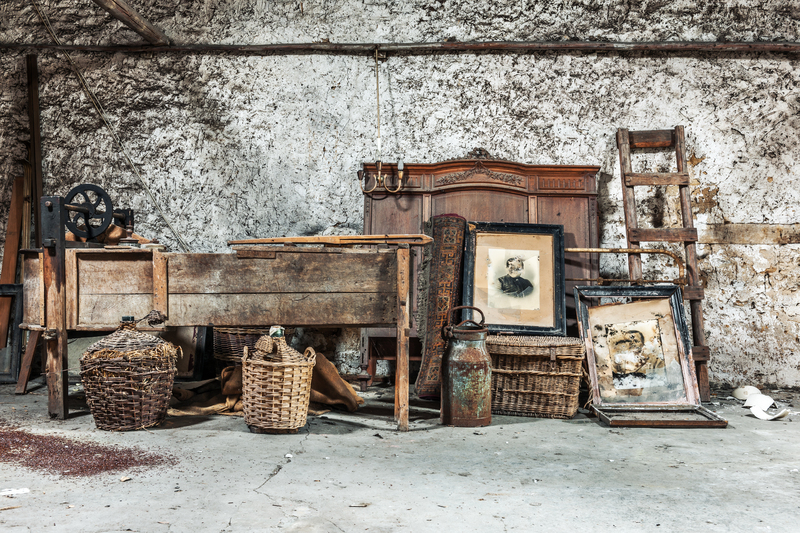What Makes Piano Moving Unique and Why DIY Approaches Fail
Moving a piano is not like moving any other household item. With their impressive size, delicate internal components, and substantial weight, piano moving presents challenges that are distinct from standard moving tasks. Whether you own an upright or a grand piano, relocating these magnificent instruments is an undertaking that requires specialized skills, equipment, and expertise. This comprehensive article will delve into what makes piano moving unique, explore why DIY piano moving approaches often fail, and provide useful insight for anyone considering moving a piano.

The Unique Challenges of Moving Pianos
Pianos are not just any piece of furniture -- they are complex, high-value musical instruments with unique characteristics that make their safe transportation especially challenging. Here are some core factors that set piano moving apart:
1. Sheer Weight and Dimensions
- Size and Shape: Pianos can range from a few hundred pounds for a spinet or console, to over 1,000 pounds for a grand piano. Their size and often-unwieldy shapes, especially for grand pianos, complicate maneuverability.
- Weight Distribution: The weight of a piano is not evenly distributed. Much of it is concentrated around the cast-iron plate and strings, making balance and support crucial during a move.
- Irregular Structure: Bulky, with protruding legs, pedals, and a fragile keyboard, pianos require special handling techniques to avoid damage.
2. Internal Delicacy and Precision
- Sensitive Mechanisms: Inside every piano are thousands of moving parts, fine-tuned to deliver the perfect sound. Jarring impacts or improper handling can sabotage their harmony.
- Tuning Sensitivity: Sudden motion, vibration, and environmental changes during a move can easily knock a piano out of tune or damage delicate components such as hammers, keys, and strings.
3. High Value -- Both Monetary and Sentimental
- Financial Investment: Pianos often represent significant investments, ranging from several hundred to tens of thousands of dollars.
- Sentimental Value: Many pianos are cherished family heirlooms, amplifying the importance of careful, safe handling.
4. Awkward Home Layouts and Access Issues
- Narrow Hallways and Staircases: Navigating stairs, tight corners, and narrow doorways with a large object like a piano adds layers of complexity.
- Elevators and Irregular Surfaces: Elevator sizes, lifts, and even outdoor terrain may present unpredictable challenges unique to each move.
These factors combine to make piano moving a highly specialized task, setting it apart from typical DIY furniture moves.
Why DIY Piano Moving Fails: Common Pitfalls and Risks
Many homeowners are initially tempted to save money by adopting a DIY approach to piano moving. Unfortunately, this strategy can quickly turn costly or downright dangerous. Let's examine why DIY piano moving often fails, and why professional piano movers are the safer choice.
1. Lack of Proper Equipment
- Specialized Dollies and Straps: Piano moves require purpose-built dollies, heavy-duty moving straps, padding, and sometimes even cranes or hoisting equipment.
- No Substitute for Experience: Even with tools, inexpert handling may lead to irreversible damage or injury.
- Vehicle Suitability: Regular moving trucks aren't always equipped with lift gates or secure harnesses required for safe piano transport.
2. Underestimating Physical Risk
- Personal Injury: Improper lifting techniques can cause serious musculoskeletal injuries like back strain, herniated discs, or even broken bones.
- Damage to the Piano and Home: Pianos can easily scratch walls, floors, or doorframes--or worse, topple over--if not correctly maneuvered.
- Inadequate Manpower: Moving a piano typically requires a team, not just two or three strong friends.
3. Inexperience with Disassembly and Reassembly
- Delicate Leg and Pedal Removal: Grand pianos often require disassembly--removing legs, lyres, and pedals. Incorrect techniques can break or permanently warp these components.
- Loss of Parts: Small hardware can go missing, causing frustration and potential damage upon reassembly.
4. Inadequate Preparation and Planning
- Route Planning: Measuring doors, hallways, and stairs -- then matching these to piano dimensions -- is easily overlooked by DIY movers.
- Weather Risks: Pianos are highly sensitive to temperature and humidity. Exposure to rain or drastic temperature changes can cripple a piano's soundboard and finish.
- Lack of Insurance: Damage incurred during a DIY move is rarely covered by homeowner's insurance or moving truck rental policies.
5. Costly Mistakes
- Expensive Repairs: Dropped pianos, scraped finishes, or internal damage can result in repair costs far exceeding the price of professional movers.
- Permanent Loss: Some damage can be irreplaceable, particularly for vintage or antique instruments.
The Expertise of Professional Piano Movers
For anyone considering moving a piano, investing in dedicated piano movers is the wisest choice. Here's what makes their services uniquely valuable:
- Comprehensive Training: Professional movers receive training in proper lifting, maneuvering, and piano-specific techniques.
- Specialized Equipment: From custom dollies and padded covers to climate-controlled vehicles, every detail is tailored for safe piano moving.
- Insurance Protection: Reputable companies offer insurance, protecting your piano (and your property) from accidental harm.
- Experience with Unique Situations: Narrow spiral staircases, high-rise elevators, or balcony lifts are routine challenges for professional piano movers, but potential disasters for amateurs.
- Reassembly and Tuning: Many piano movers also offer expert reassembly and post-move tuning services, ensuring your instrument sounds as beautiful as it did before the move.
What To Expect from Professional Piano Moving Services
- On-Site Assessment: Movers will visit your current and new homes to evaluate potential obstacles and plan the safest route.
- Secure Packing: Your piano will be padded and wrapped to prevent any dings, scratches, or internal damage.
- Safe Transportation: The instrument will be safely secured within the moving vehicle to prevent shifting en route.
- Skilled Reinstallation: Assembly in your new space is handled with the same care and expertise as the move itself.
Piano Moving: DIY vs. Professional -- A Comparative Analysis
| Aspect | DIY Piano Moving | Professional Piano Movers |
|---|---|---|
| Safety | High risk of injury/damage | Trained, insured professionals minimize risks |
| Equipment | Improvised or substandard tools | Purpose-built equipment and packing materials |
| Expertise | Lack of experience, risk of mistakes | Years of specialized experience |
| Insurance | Usually none | Coverage for instrument and property |
| Cost | Low upfront, high post-risk | Fair, transparent pricing - minimal risk of expensive mistakes |
| Convenience | Complicated, stressful, uncertain | Easy, painless, and professional |
Frequently Asked Questions About Piano Moving
How do piano movers protect the instrument during the move?
Professional piano movers use thick padding, custom-fit wraps, heavy-duty dollies, and secure straps specifically designed for different types and brands of pianos. They also protect floors, stairs, and entryways from damage during the process.
Is tuning required after moving a piano?
Yes. Piano moving exposes the instrument to temperature and humidity fluctuations that can affect tuning. It is generally recommended to wait a few weeks before tuning, once the piano acclimates to its new environment.
Can all pianos be moved upstairs?
With specialized equipment and sufficient manpower, most pianos can be moved upstairs--but this is best left to the professionals. Attempting to maneuver a piano on stairs without the right techniques and tools can be disastrous.
Are there risks in moving a piano short distances?
Absolutely. Even moving a piano within the same house can result in significant damage if not done correctly. The size, weight, and sensitivity of pianos mean that any move should be taken seriously.

Essential Tips for Choosing a Piano Moving Company
- Check Credentials: Ensure the company specializes in piano moves - not just standard household moves.
- Insurance Coverage: Insist on proof of adequate insurance to cover potential damages.
- Read Reviews: Look for independently verified customer reviews and testimonials.
- Experience Matters: Choose established companies with a track record of safe and successful piano moves.
- Get a Written Quote: Ask for a detailed, written estimate that outlines all potential charges.
Piano Moving is Unique - Here's Why Professionalism Matters
To summarize, both the complexity and value of pianos make their relocation a uniquely challenging endeavor. DIY piano moving efforts generally fail due to lack of specialized skills, correct equipment, and experience -- frequently resulting in expensive repairs or even irreparable loss. On the other hand, professional piano movers bring to the task trained teams, purpose-built tools, comprehensive insurance, and a thorough understanding of piano moving's unique demands.
If you love your piano - for its sound, its memories, or its artistry - trust its next move to the professionals. The peace of mind, preservation of value, and guaranteed safety more than justify the investment. Piano moving is unlike any other type of move -- and it deserves to be treated with the expertise and respect that only dedicated piano movers can provide.
Final Thoughts: Put Your Piano in the Right Hands
In conclusion, while it's tempting to tackle every moving project yourself, piano moving is unique and demands a level of skill and preparation that only seasoned professionals possess. Don't gamble with your cherished instrument. Instead, invest in its future -- and your own peace of mind -- by hiring dedicated, experienced piano movers for your next relocation.
Remember: A piano is more than just an object. Its music, history, and beauty deserve only the best treatment - especially when on the move.



